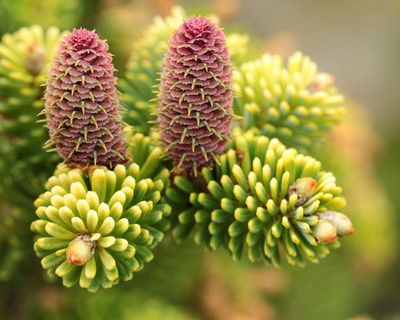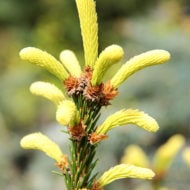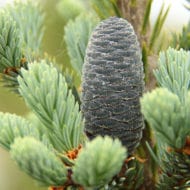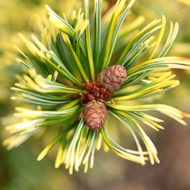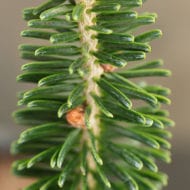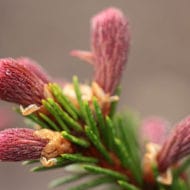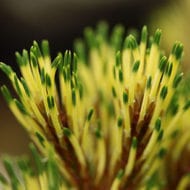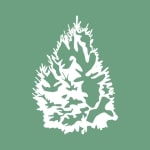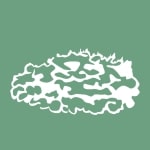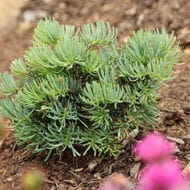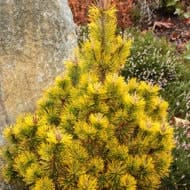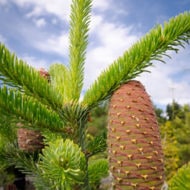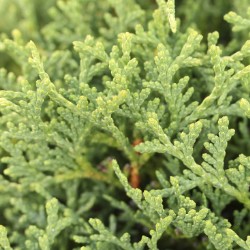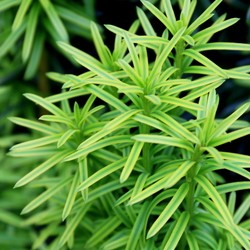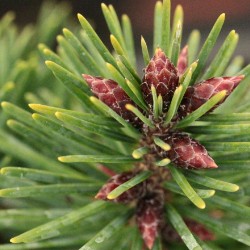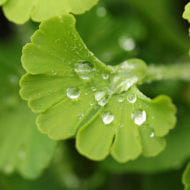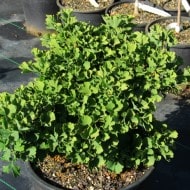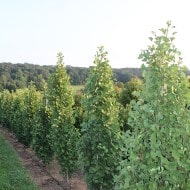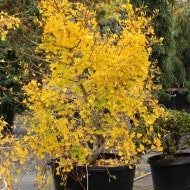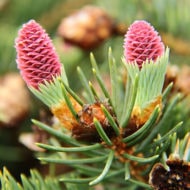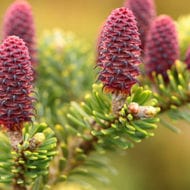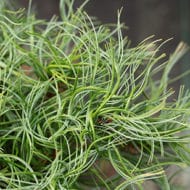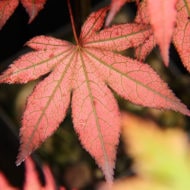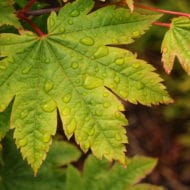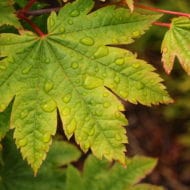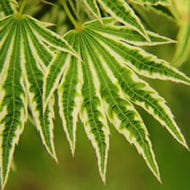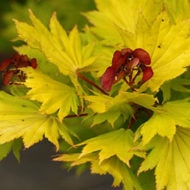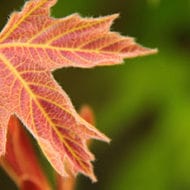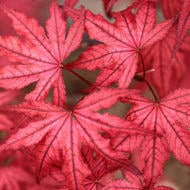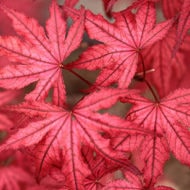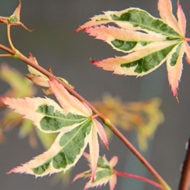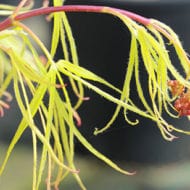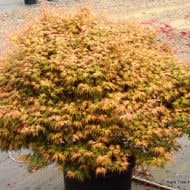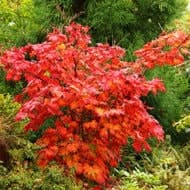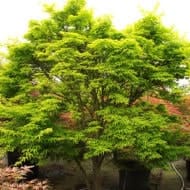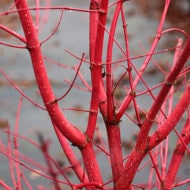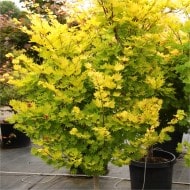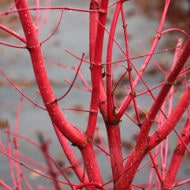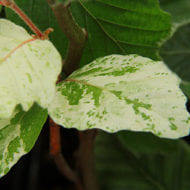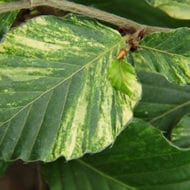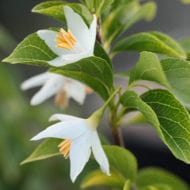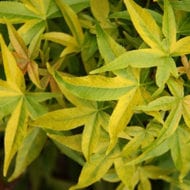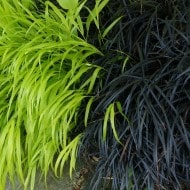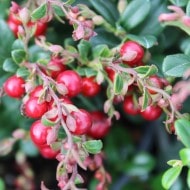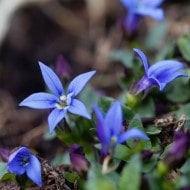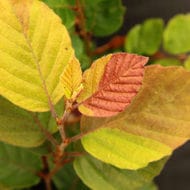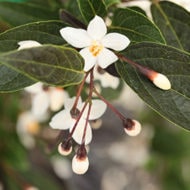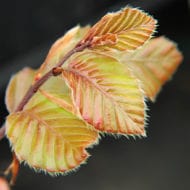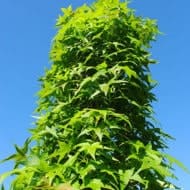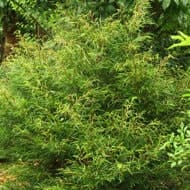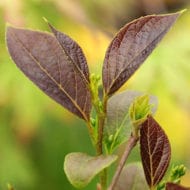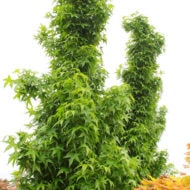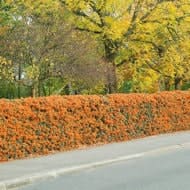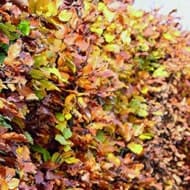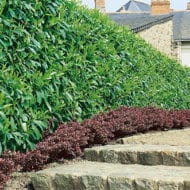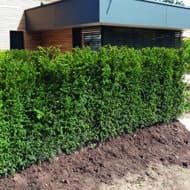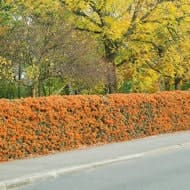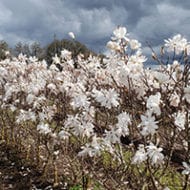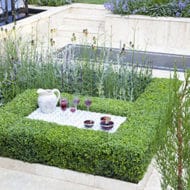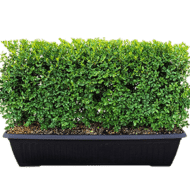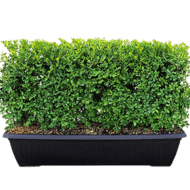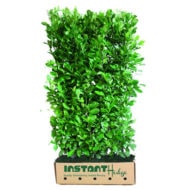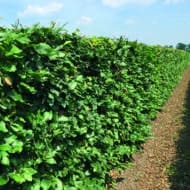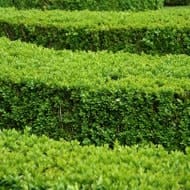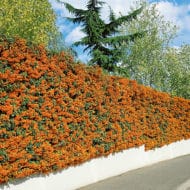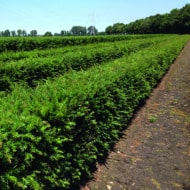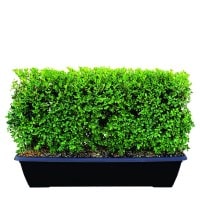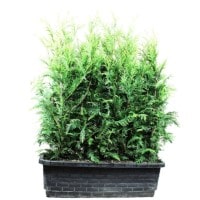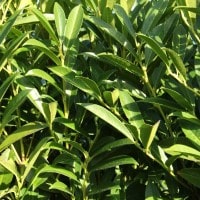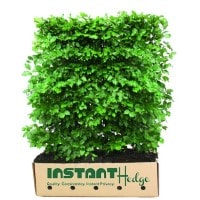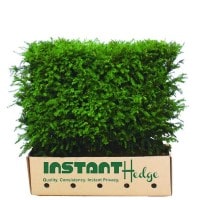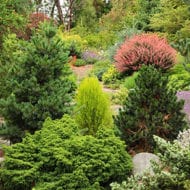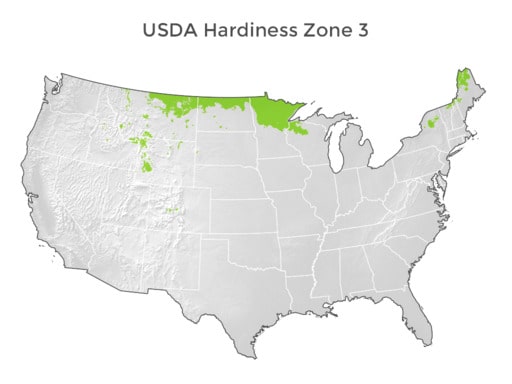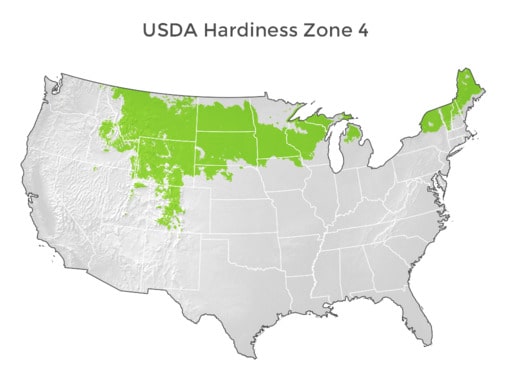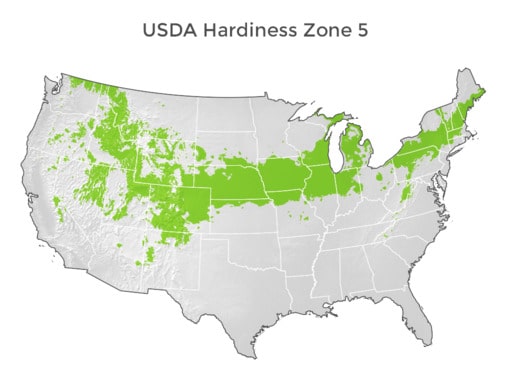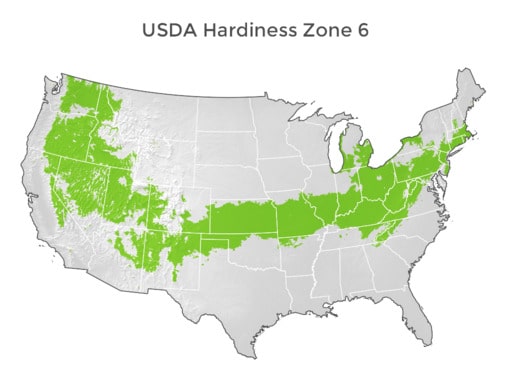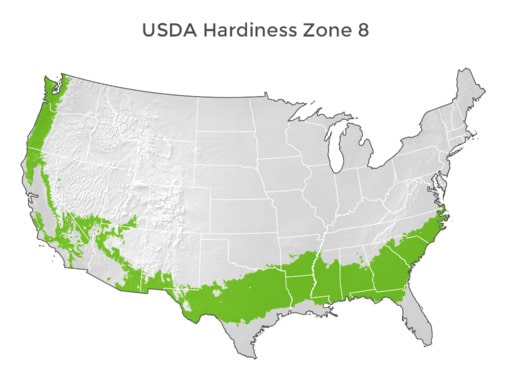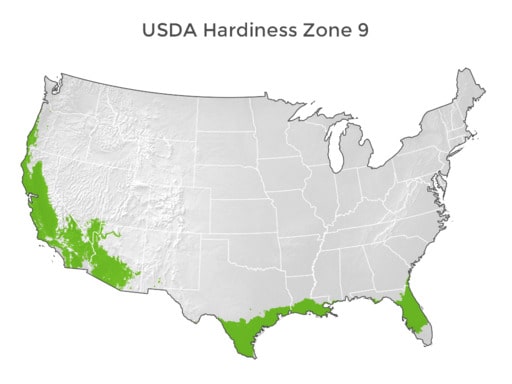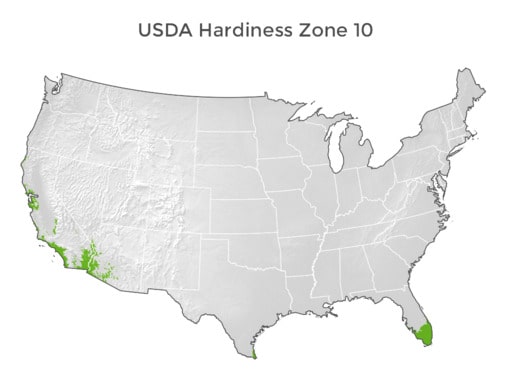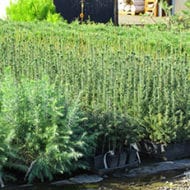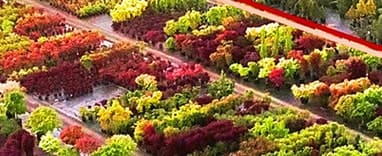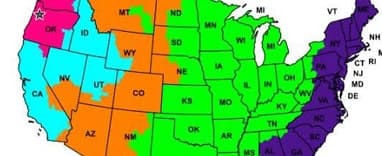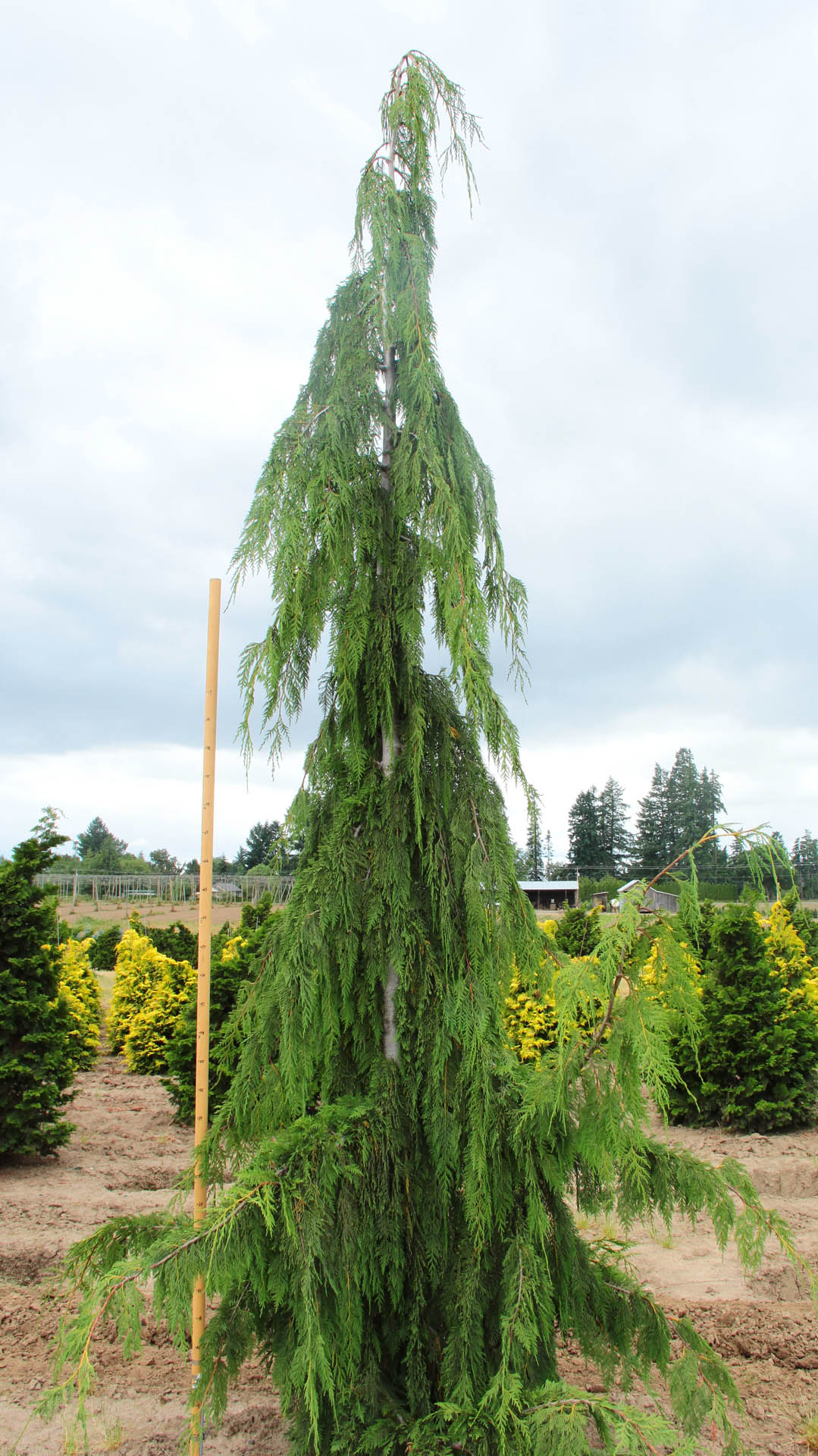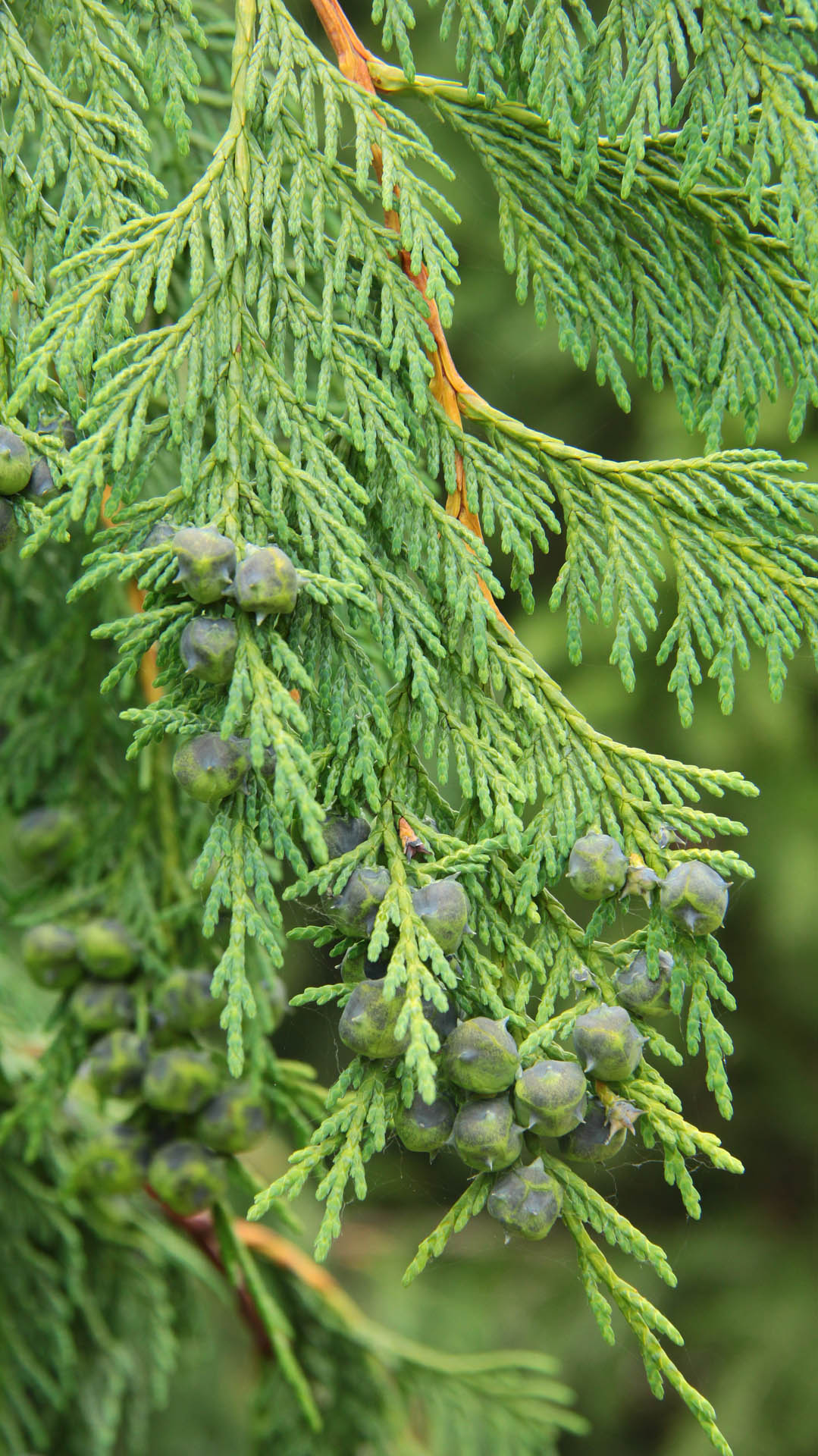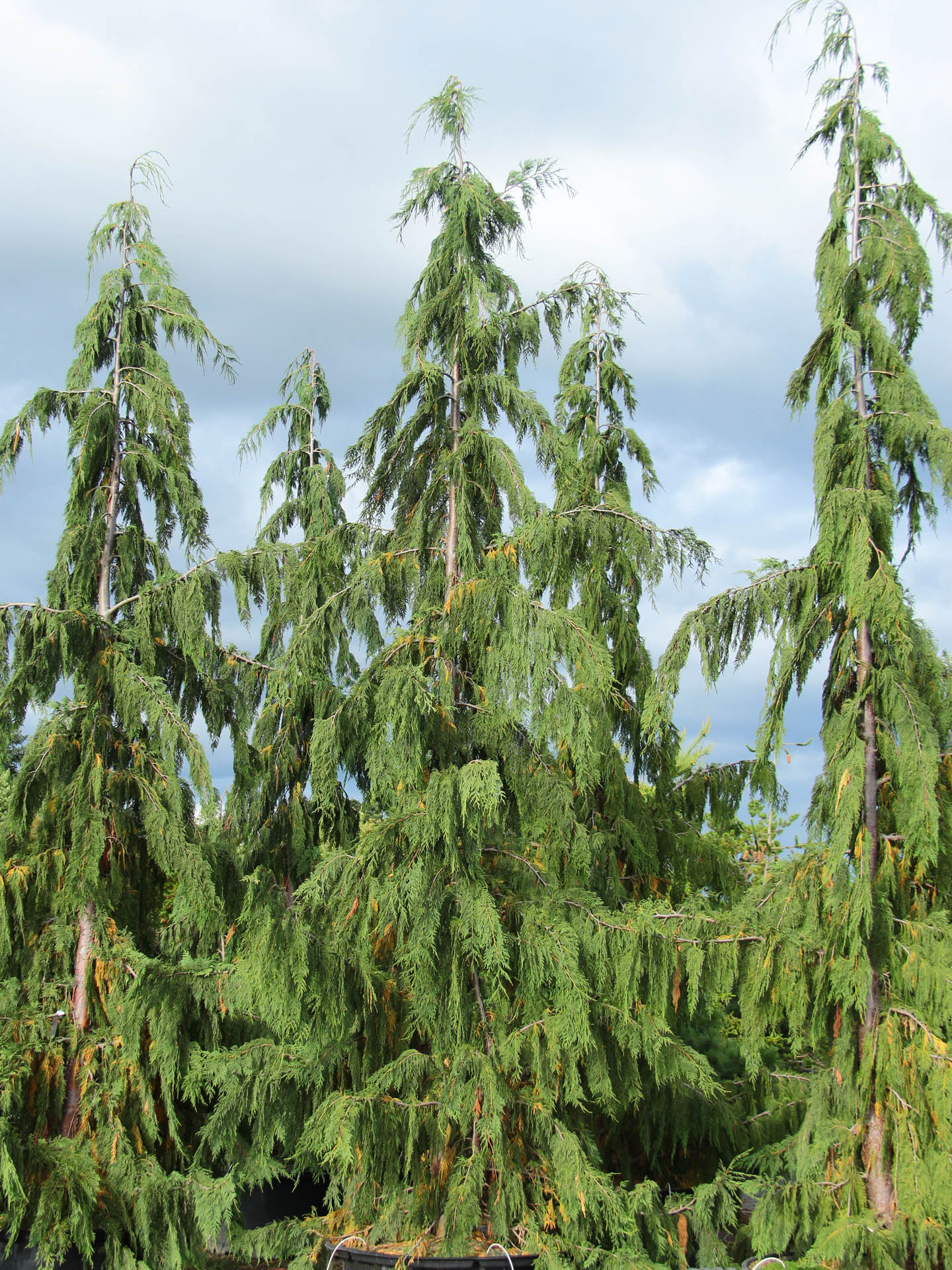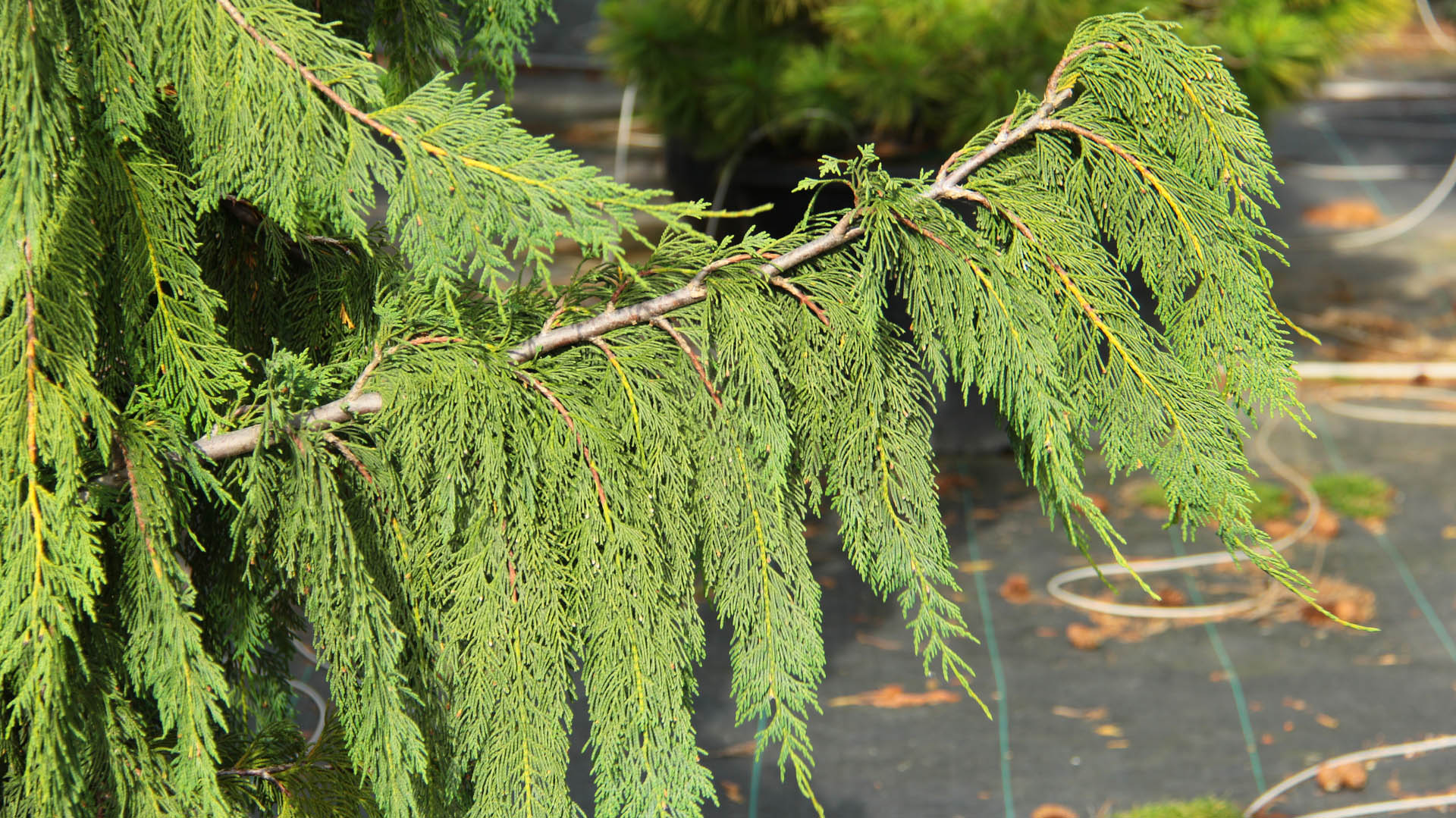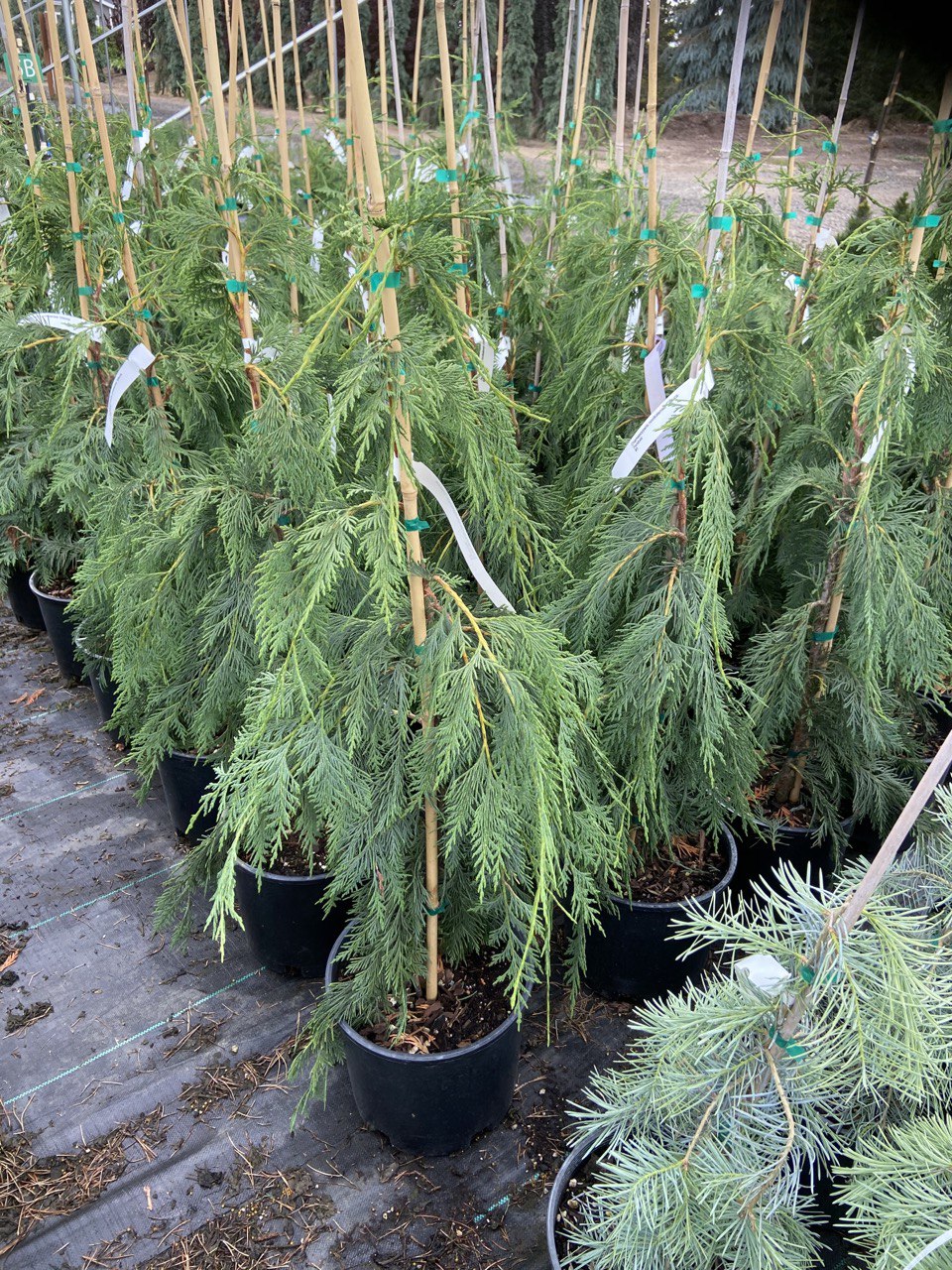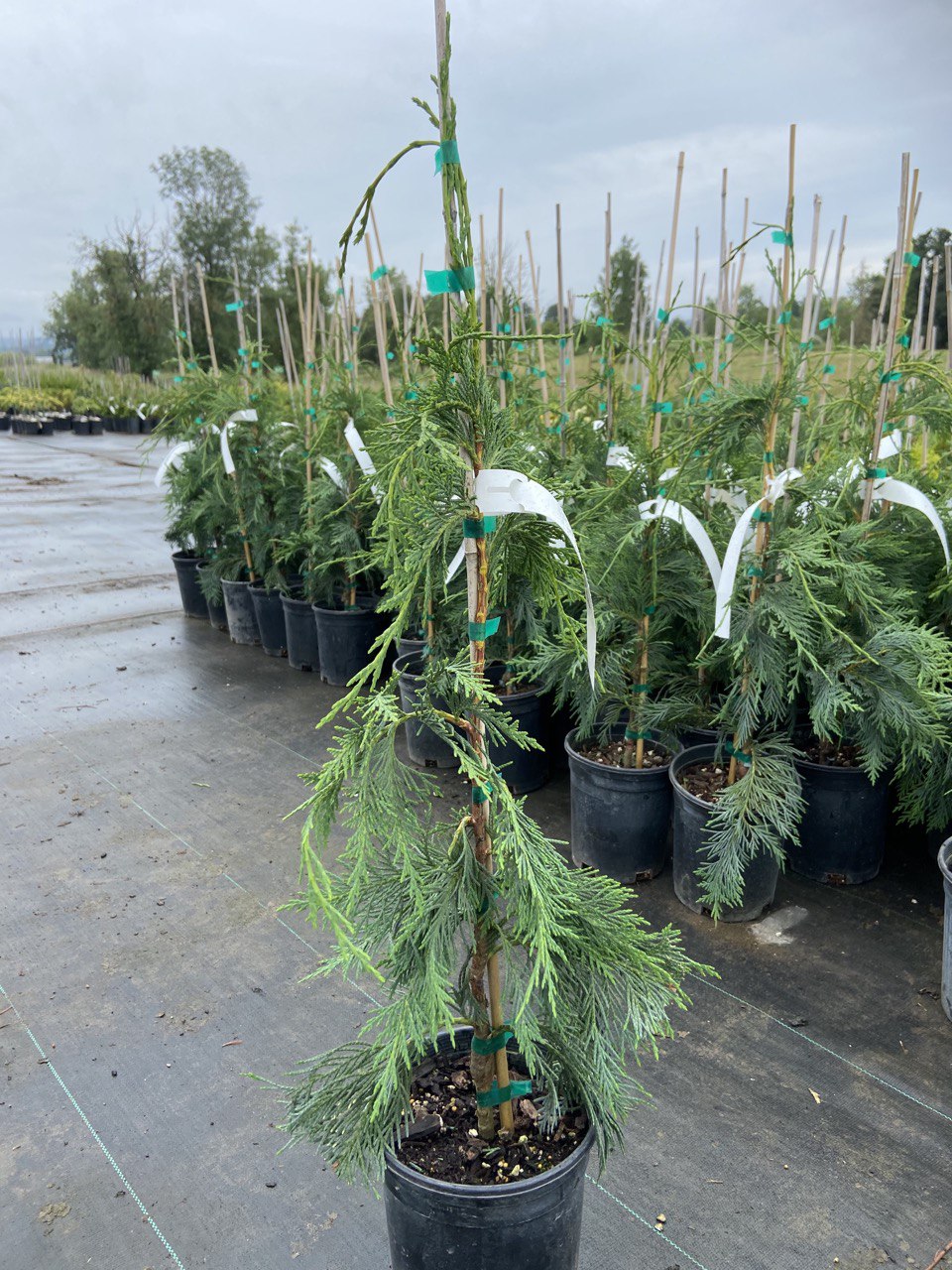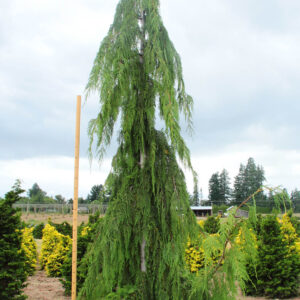
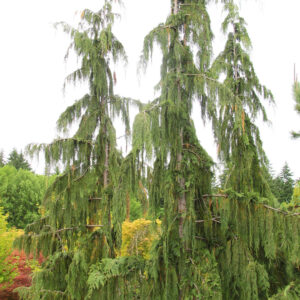
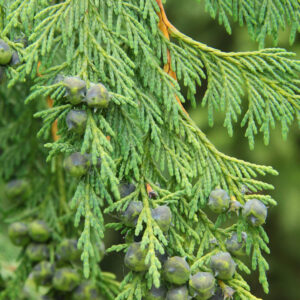

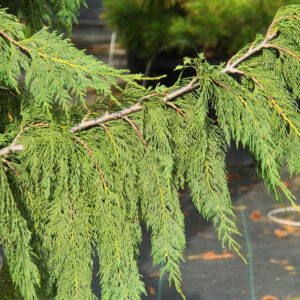
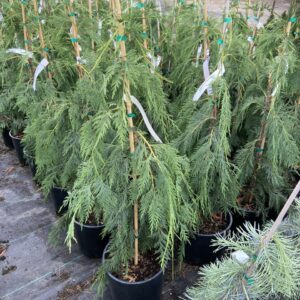

*Photos may demonstrate how the plant grows and do not necessarily pertain to the available crop(s).
Cupressus nootkatensis ‘Glauca Pendula’ Alaskan Cedar
- Narrow and weeping pyramidal tree with blue-green foliage
- Reddish-brown peels off from the trunk
- Excellent as an accent or specimen tree
SKU: CupNoot-GlaucaPendula-0-0
Categories: Blue Conifers, Cupressus nootkatensis - Alaskan Cedars, Green, Green Conifers, Large, Large, Our Plants, Weeping, Weeping, Zone 4, Zone 5, Zone 6, Zone 7, Zone 8
Tags: All Is Fixed, Hardiness Zone 4, Not Popular
Description
A columnar upright with weeping branches. Blue-green foliage. Can tolerate very shady sites. This species was formerly and is still commonly thought to be in the Chamaecyparis genus. However, it readily hybridizes with other species of Cupressus and bears many similarities, so it is now taxonomically classified as a species of Cupressus. In the past, it was also known as Xanthocyparis nootkatensis and Callitropsis nootkatensis.
USDA Hardiness Map
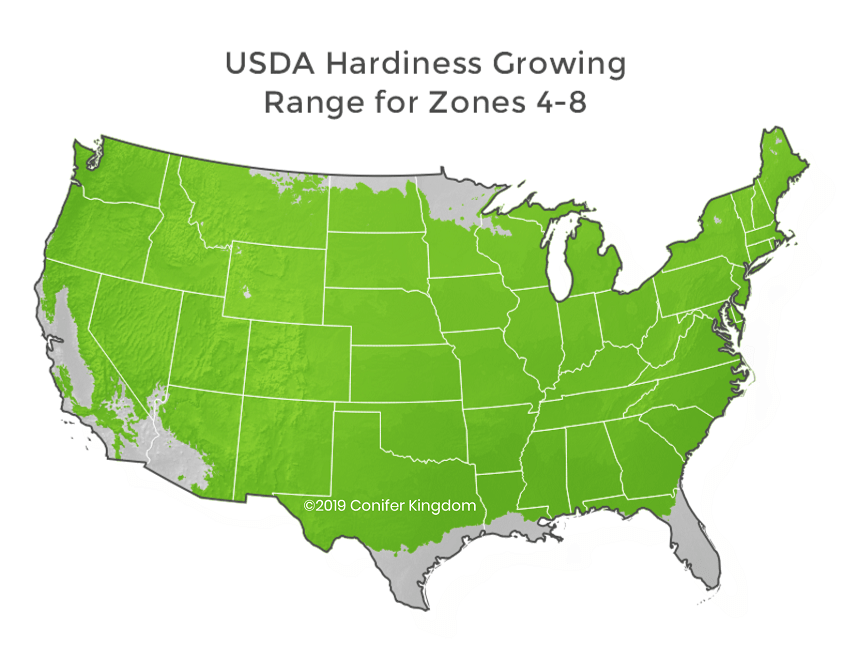
Plant Form

Nootka Cypress, or Weeping Alaskan Cedar, is an elegant, pyramidal tree with flat sprays of blue-green foliage hanging gracefully from horizontal branches. It is native to moist bottomlands and ravines in northern California and the Pacific coast of Alaska and is excellent as a specimen or accent tree for a narrow or small space.
This unique tree has many names. Its original name was Cupressus nootkatensis ‘Glauca Pendula,’ but botanists have also called it Chamaecyparis nootkatensis ‘Glauca Pendula,’ Callitropsis nootkatensis ‘Glauca Pendula,’ or the currently accepted name, Xanthocyparis nootkatensis ‘Glauca Pendula.’
The Nootka Cypress can grow 100′ tall by 30′ wide in its native habitat and live for an incredible 1000 years. However, it grows considerably shorter in home gardens and can attain 15′ × 4′ in 10 years and about 35′ by 12′ after many years. Its upright trunk nods gracefully at the top, and the foliage consists of flat sprays of overlapping blue-green scales that hang down from the upturned branches, giving it a dramatic, weeping appearance. Tiny, one-third to one-half-inch reddish-purple cones develop at the ends of the branchlets and turn brown as the season progresses. Reddish-brown bark peels off in sheets above the buttressed base of the tree.
Nootka Cypress grows in USDA hardiness zones 4 to 8 in sun to partial shade. It needs consistently moist, well-draining, acidic soil that isn’t waterlogged, similar to the conditions in its native habitat. It requires regular watering while establishing and then during periods of dryness and a layer of mulch at its base to keep the soil moist and weeds at a minimum. In northern areas of the United States and Canada, zones 4 to 6, it grows best in full sun, away from winter winds that can desiccate its foliage. In the southern zones 7 and 8, it does better in morning light and partial shade to shade in the afternoon.
This tree’s narrow, weeping form makes it an elegant accent tree singly or in informal groupings for the corners of a building, an entryway, a city garden, a courtyard, a conifer garden, or a rock garden. Nootka Cypress is a spectacular focal point in the garden and should not be crowded with other trees and shrubs. Low-growing junipers and small perennials around the base of the tree add color and interest, such as coral bells, hellebores, anemones, astilbes, lithodoras, creeping phlox, and creeping myrtle. Spring bulbs, like tulips, daffodils, crocus, and hyacinths, add some color early in the season. Azaleas and flowering quince planted nearby also enhance the tree.
This unique tree has many names. Its original name was Cupressus nootkatensis ‘Glauca Pendula,’ but botanists have also called it Chamaecyparis nootkatensis ‘Glauca Pendula,’ Callitropsis nootkatensis ‘Glauca Pendula,’ or the currently accepted name, Xanthocyparis nootkatensis ‘Glauca Pendula.’
The Nootka Cypress can grow 100′ tall by 30′ wide in its native habitat and live for an incredible 1000 years. However, it grows considerably shorter in home gardens and can attain 15′ × 4′ in 10 years and about 35′ by 12′ after many years. Its upright trunk nods gracefully at the top, and the foliage consists of flat sprays of overlapping blue-green scales that hang down from the upturned branches, giving it a dramatic, weeping appearance. Tiny, one-third to one-half-inch reddish-purple cones develop at the ends of the branchlets and turn brown as the season progresses. Reddish-brown bark peels off in sheets above the buttressed base of the tree.
Nootka Cypress grows in USDA hardiness zones 4 to 8 in sun to partial shade. It needs consistently moist, well-draining, acidic soil that isn’t waterlogged, similar to the conditions in its native habitat. It requires regular watering while establishing and then during periods of dryness and a layer of mulch at its base to keep the soil moist and weeds at a minimum. In northern areas of the United States and Canada, zones 4 to 6, it grows best in full sun, away from winter winds that can desiccate its foliage. In the southern zones 7 and 8, it does better in morning light and partial shade to shade in the afternoon.
This tree’s narrow, weeping form makes it an elegant accent tree singly or in informal groupings for the corners of a building, an entryway, a city garden, a courtyard, a conifer garden, or a rock garden. Nootka Cypress is a spectacular focal point in the garden and should not be crowded with other trees and shrubs. Low-growing junipers and small perennials around the base of the tree add color and interest, such as coral bells, hellebores, anemones, astilbes, lithodoras, creeping phlox, and creeping myrtle. Spring bulbs, like tulips, daffodils, crocus, and hyacinths, add some color early in the season. Azaleas and flowering quince planted nearby also enhance the tree.
Additional information
| Weight | N/A |
|---|---|
| Latin Name | Cupressus nootkatensis 'Glauca Pendula' |
| Common name | Weeping Blue Alaskan Cedar |
| Sun Exposure | Sun/Part Shade/Shade |
| ANNUAL GROWTH | 12-18" |
| HxW@10 Years | 12'x3' |
| Hardiness Zone | Zones 4-8 |
| Growth Rate | |
| Form | |
| Color | |
| Your auto-detected zip code |  |
| hardiness zone based on zip code |  |
| You can also try another zip code |
Related products
-

Abies koreana ‘Cis’ Korean Fir
$59.99 – $134.99Price range: $59.99 through $134.99 View Details This product has multiple variants. The options may be chosen on the product page -

Acer palmatum ‘Crimson Carole’ Japanese Maple
View Details -

Acer palmatum ‘Hupp’s Dwarf’ Japanese Maple
$69.99 View Details This product has multiple variants. The options may be chosen on the product page -

Fagus sylvatica ‘Red Obelisk’ European Beech
$89.99 View Details This product has multiple variants. The options may be chosen on the product page


